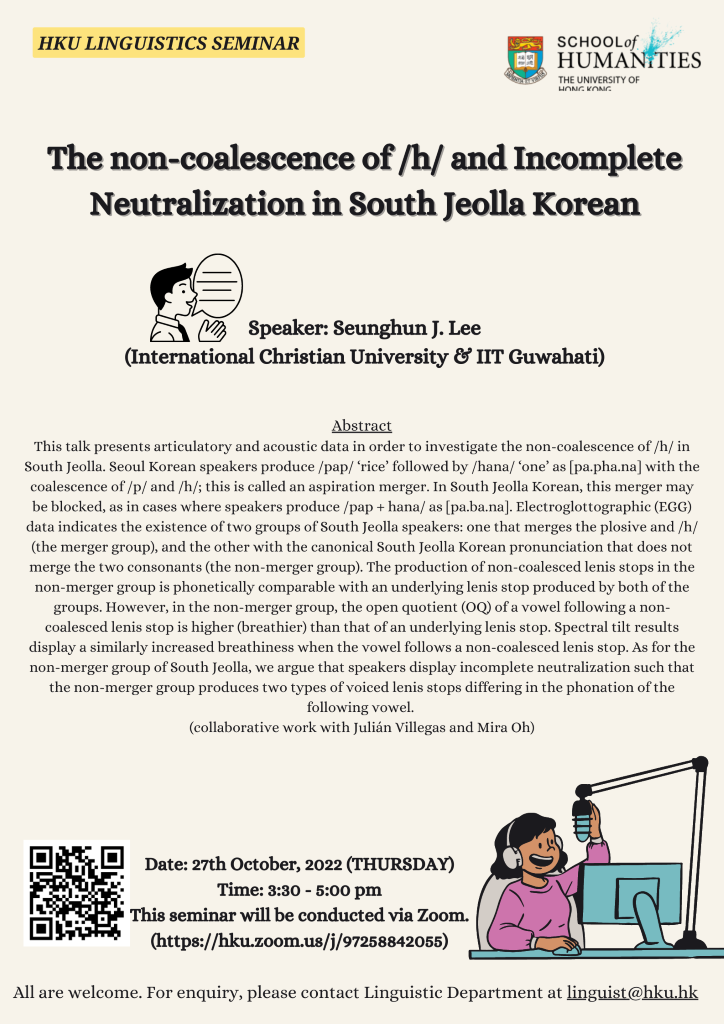

The Non-Coalescence of /h/ and Incomplete Neutralization in South Jeolla Korean – Dr. Seunghun LEE, International Christian University & IIT Guwahati
October 27, 2022 @ 3:30 pm - 5:00 pm
This talk presents articulatory and acoustic data in order to investigate the non-coalescence of /h/ in South Jeolla. Seoul Korean speakers produce /pap/ ‘rice’ followed by /hana/ ‘one’ as [pa.pha.na] with the coalescence of /p/ and /h/; this is called an aspiration merger. In South Jeolla Korean, this merger may be blocked, as in cases where speakers produce /pap + hana/ as [pa.ba.na]. Electroglottographic (EGG) data indicates the existence of two groups of South Jeolla speakers: one that merges the plosive and /h/ (the merger group), and the other with the canonical South Jeolla Korean pronunciation that does not merge the two consonants (the non-merger group). The production of non-coalesced lenis stops in the non-merger group is phonetically comparable with an underlying lenis stop produced by both of the groups. However, in the non-merger group, the open quotient (OQ) of a vowel following a non-coalesced lenis stop is higher (breathier) than that of an underlying lenis stop. Spectral tilt results display a similarly increased breathiness when the vowel follows a non-coalesced lenis stop. As for the non-merger group of South Jeolla, we argue that speakers display incomplete neutralization such that the non-merger group produces two types of voiced lenis stops differing in the phonation of the following vowel.
(collaborative work with Julián Villegas and Mira Oh)
| Zoom meeting: | https://hku.zoom.us/j/97258842055 |
| Meeting ID: | 972 5884 2055 |
